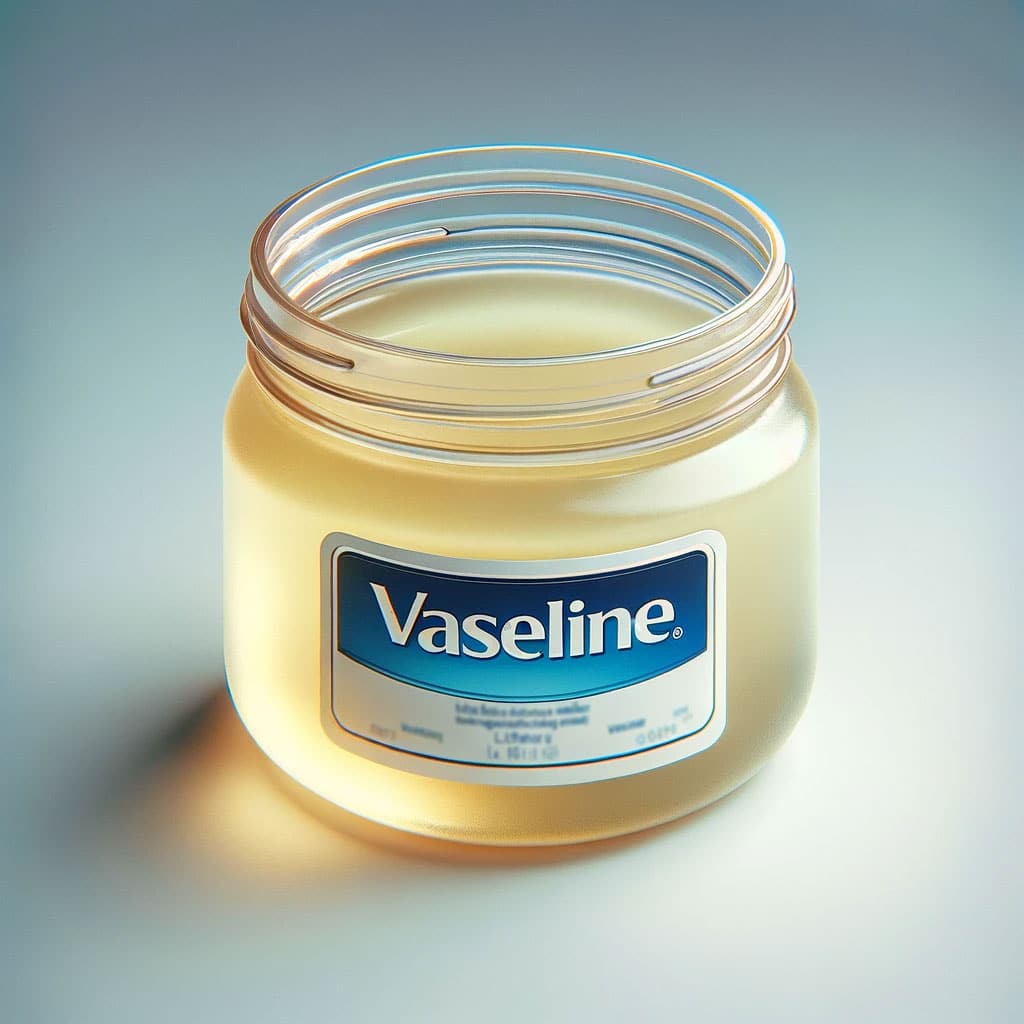Vaseline, or petroleum jelly, is a common household product known for its moisturizing properties. It has been widely used for various skin care purposes, including as a remedy for dry skin and protection against harsh weather conditions. However, its role in acne treatment is much more complicated and requires a closer look. Acne is a prevalent skin condition characterized by the appearance of pimples, blackheads, and cysts, mainly caused by the clogging of pores with excess oil and dead skin cells.
Within the realm of skincare routines, the use of Vaseline has been a topic of debate among experts.
Understanding Vaseline and Its Effects on Skin
Vaseline, a well-known brand of petroleum jelly, has long been used for skin care. This section investigates how Vaseline interacts with the skin, its potential benefits, and the risks it may pose, especially for those with acne-prone skin.

Composition of Vaseline and Skin Interaction
Petroleum jelly, the main component of Vaseline, is known for its occlusive properties, which create a protective barrier on the skin’s surface. This barrier helps to moisturize by sealing in moisture and protecting the skin from environmental elements.
Its makeup is largely hydrocarbons, and it is considered non-comedogenic, meaning it does not clog pores on its own.
Benefits and Uses for Acne-Prone Skin
For individuals with acne-prone skin, maintaining proper moisture levels without exacerbating acne is crucial. A dermatologist might recommend Vaseline for its ability to protect wounded skin or post-procedure areas to prevent dryness.

According to the American Academy of Dermatology, a non-comedogenic product like Vaseline does not cause acne by itself and thus can be used on sensitive or healing skin.
- Pros:
- Seals in moisture to prevent dryness
- Forms a protective barrier on minor wounds
- Does not contain additives that might irritate the skin
- Typically does not clog pores if used sparingly on non-acne areas
Potential Risks and Considerations
While Vaseline is non-comedogenic, its occlusive nature means that it can potentially trap oils or other comedogenic substances on the skin, which may lead to acne if the skin is not clean before application. Therefore, care should be taken when using it on oily or acne-prone areas.
There’s a consensus among some health professionals that Vaseline should be used with caution or avoided in acne-affected areas.
- Cons:
- May trap substances on the skin that clog pores
- Can feel heavy or greasy if over-applied
- Some individuals may experience adverse reactions if sensitive to petroleum-based products
Incorporating Vaseline in Acne Skincare
Vaseline, often used in skincare for its moisturizing properties, has garnered attention for its role in acne treatment. This section discusses its application, comparisons to other products, and expert insights for those considering Vaseline as part of their skincare routine.

Application Techniques for Acne Sufferers
For individuals suffering from acne, applying Vaseline to support skin hydration can be a delicate process. It’s crucial to start with clean skin; cleansing helps remove excess oil and debris.
Post-cleansing, a thin layer of Vaseline can be applied to the affected area, adopting the “slugging” method — a technique where Vaseline is used overnight to form a protective barrier aiding in skin moisture retention.
It’s important to perform a patch test before full application to ensure there’s no negative reaction, such as increased breakouts.
Alternative Products and Comparisons
While Vaseline is a well-known occlusive, alternatives like Cerave Healing Ointment and Aquaphor also offer similar benefits with additional ingredients for skin health. Unlike Vaseline, Cerave Healing Ointment includes ceramides and hyaluronic acid, which aid in the skin’s natural barrier and hydration.
Aquaphor, on the other hand, contains lanolin, which some find to be more soothing. Each of these products has a different level of comedogenic properties, with Vaseline being non-comedogenic, meaning it’s less likely to clog pores. Users should consider these factors and their skin’s needs when selecting a product.
Expert Recommendations and Practices
Dermatologists generally recommend the cautious use of Vaseline in an acne-prone skincare regimen. It’s used as an occlusive to lock in moisture, but experts caution that it does not replace a daily moisturizer.
Expert advice often emphasizes evaluating one’s skin type and existing skincare routine, considering that not all skin care products will be compatible with Vaseline.
Moreover, professionals stress the importance of hygiene when using tub-based products to prevent bacterial transfer to the skin, which may worsen breakouts. Consulting with a dermatologist to adapt practices that complement one’s specific skin condition is advised.

